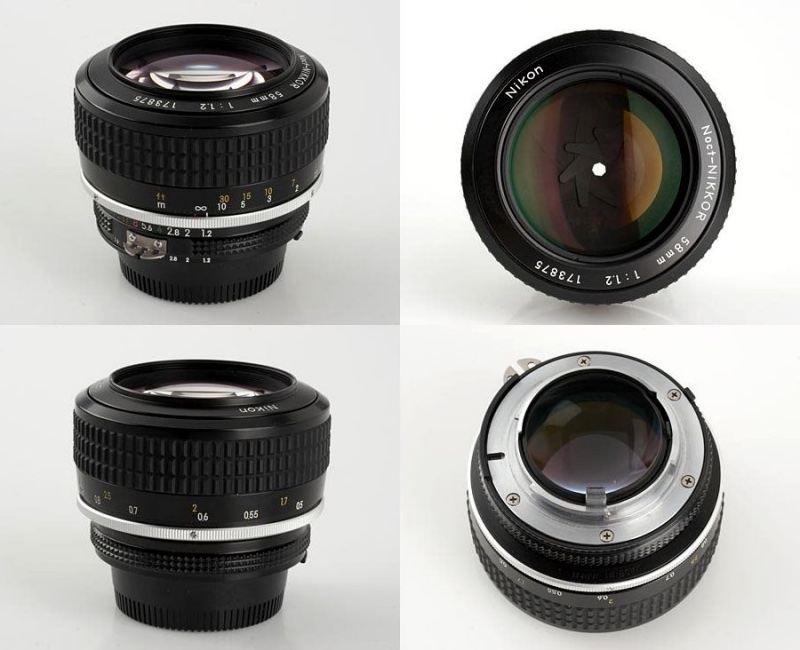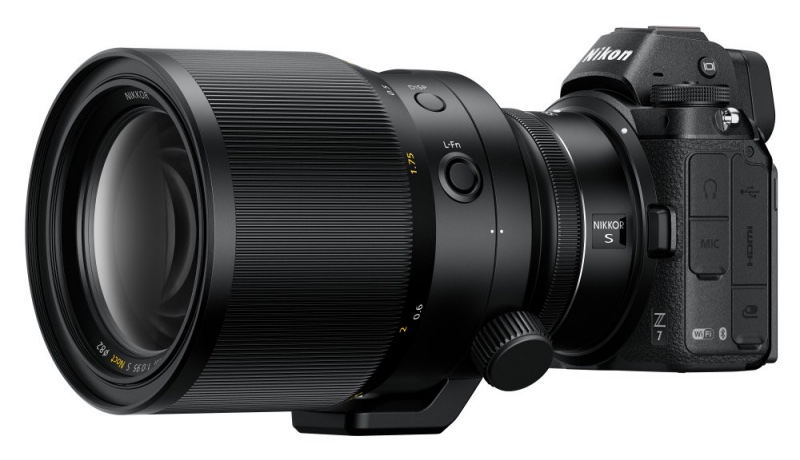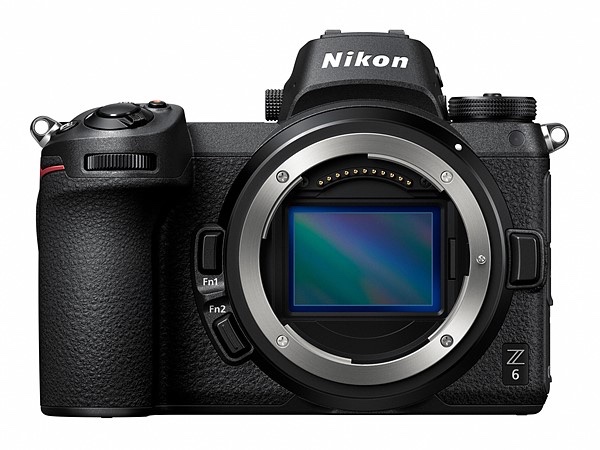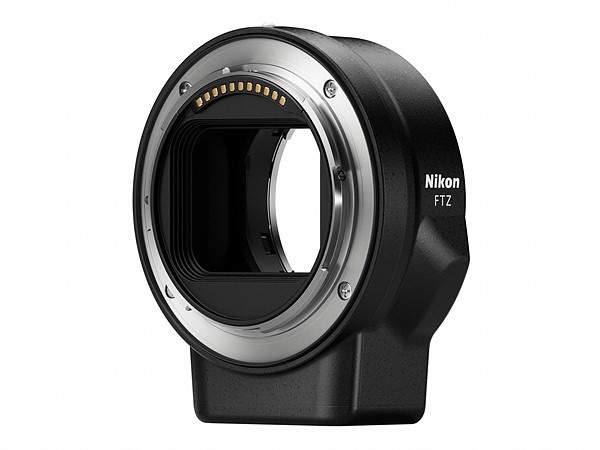Exciting.
The original Noct Nikkor, a 58mm f/1.2, was first sold in February, 1977.

The original Noct Nikkor.
The original design has Ai aperture coupling which was revised to Ai-S in November 1981. The ‘S’ designation designates a linear aperture coupling cam compared with the non-linear original but optically and operationally there was no difference. If you could fit a CPU to the Noct then the Ai-S design would allow control of the aperture with either the aperture ring on the lens or the command dial on the body while still maintaining proper exposure metering. The snag, as the above images disclose, is that there is absolutely no room to install a CPU. Some brave/foolish souls have machined a recess in an arc of the rear element to permit CPU installation but that seems like a drastic solution to a not so real problem, as this is the only Nikkor in F mount to which a CPU cannot be fitted.
The Noct was reckoned by all and sundry – not just Nikon – to be the best standard f/1.2 lens around, and Nikon proudly profiled it in a factory piece which you can read here. The optic’s distinguishing characteristic was low coma at full aperture, as the illustrations in that linked article confirm. A mere 2,461 Ai versions and a further 8,950 Ai-S versions were sold, making the lens an instant choice of the pond scum known as ‘collectors’, which means that used examples sell for $3-7,000. The lens was discontinued in November 1998.
With the introduction of the new Z series mirrorless bodies yesterday Nikon also announced that a new Noct would be marketed in 2019, but this time it would come with a maximum aperture of f/0.95, while retaining the 58mm focal length. Price is unknown but reckon on $5-6,000. Interestingly Nikon will not include AF in the new optic, but the ability in the Z6 and Z7 mirrorless bodies to magnify the focus area in the finder/on the LCD screen means that critical focus wide open should be simple to determine. The lens is a whopper, its bulk dictating the inclusion of a tripod socket:

The new Noct.
The wider diameter of the bayonet mount’s throat on the Z6/7 makes the faster aperture possible.
I can think of a couple of similarly fast lenses in the past – the f/0.95 Canon for their rangefinder cameras (good luck focusing that), reputed to be poor, the f/1.1 Zunow in a Nikon mount, reputed to be awful, the original 50mm f/1.2 Leitz Noctilux with hand ground aspherical elements, suitably priced and excellent optically and the current 50mm f/1.0 Noctilux, like its predecessor available in M rangefinder mount also and superb, as it should be at the asking price of $11,000. The original f/1.0 design of the Noctilux is now F/0.95. How on earth you are meant to focus this optic given the limitations of the Leica M’s optical rangefinder beats me, but $11k gets you bragging rights.
The new Noct promises to be cheaper and better than all comparable predecessors. Exciting times at Nikon. This may be a ‘glamor’ optic with little practical use, but it’s good to see Nikon allowing its designers to stretch for the ultimate.

